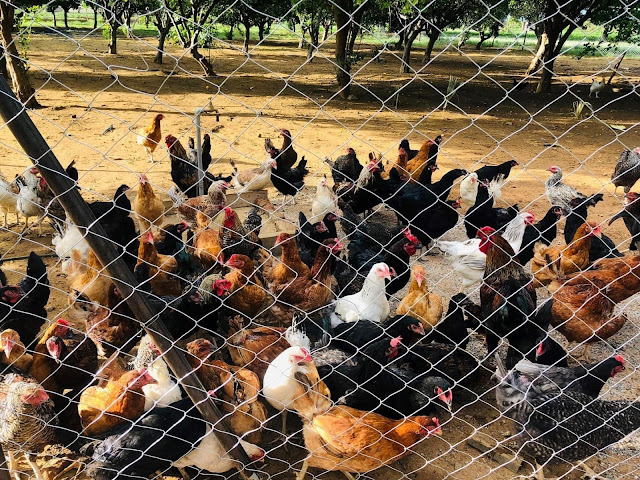Below is
the cost estimate prepared by ‘Kuku Kenya’ for raising 100 improved kienyeji
chicks up to the time they start laying eggs, mostly at 5 to 6 months of age.
Note
that the calculations are based on the current market prices which may vary
with time and locality. The estimates are broadly based on the major expenses
and may not include other unpredictable costs. We assume you have the structure
and equipments ready.
STEP 1: Purchase
of Chicks
Kuku
Kenya Ltd. sells 3 days old improved kienyeji chicks (kari, kuroilers, rainbows,
kenbro, premium kienyeji and sasso) vaccinated against mareks at 90sh each. Totalling
to 9000ksh, call +254-725-285599 to make your order.
STEP 2:
Feeding
First
one week give about 1.5kgs of chick mash for the 100 birds.
At 2 to 3
weeks of age give about 3.5kgs of chick mash.
At 7 to 8
weeks give about 60g of growers mash per bird amounting to 6kgs for the 100
birds.
Above 28
weeks give 140g per bird per day amounting to 14kgs for the 100 birds.
Change
of feeds from chick mash to growers mash then to layers mash should be done
gradually.
Layers
mash should be introduced after 5% of the birds start laying.
From 6
weeks of age introduce greens and maize into their diet to reduce feed cost. Free
ranging them is also an option.
Most
farmers instead of giving chick mash to the chicks they give them starter mash (food
for broilers) for them to grow fast however this is not advisable as it may
damage the chicks’ organs in future. Furthermore a 50kg bag of starter mash
goes for about 3600sh, chick mash goes for 2700sh.
Other
farmers introduce growers mash early to save costs of production. A bag of
chick mash goes for 2700sh, growers mash at 2200sh.
STEP 3:
Vaccines, Vitamins, Deworming
Mareks
is the first vaccine usually done at hatcheries.
Gumboro first
and second dose each at 400sh, totalling to 800sh.
Newcastle first
and second doses each at 350sh. Totalling to 700sh. Newcastle is continuous and
should be given after every three months.
Fowl pox vaccine
at 450sh each. This is administered through wing web stab and it might cost you
if you are afraid of seeing a little blood hence the need for a vet or google
how to go about it.
Fowl
typhoid vaccine at 450sh. It’s administered through intermuscular injection.
You will need a vets' assistance at first, look and learn how he does it. Next
time do it yourself. This applies to all the other vaccines.
There is
a procedure used in administering all vaccines given through Water. Ensure the
chicks are thirsty, say withdraw water an hour before giving the vaccine.
Remove
the water with the vaccine after two hours.
Sick
birds should not be given vaccines. To ensure the birds are healthy before the
vaccine, give them a combination of multivitamins and antibiotics a few days
before the vaccines.
Dewormers
go for 150sh each, deworming too should be done after every three months.
STEP 4:
Miscellaneous
This includes
multivitamins, antibiotics, disinfectants sawdust, labour, transport costs or
any additional costs. Set aside 8000 to 10000sh for all this.
In
conclusion, raising chicks requires that you prepare thoroughly before they
arrive.
Other
ways you can save cash when building the structure is don’t build it on a
slope, use locally available materials to build. Source materials for yourself don’t
be told where to buy them by the fundi. Lastly if in case you are using a
fundi, get correct quotations, pay them as per the task done and not per day because
they tend to extend working days.
If you
enjoyed this post about kienyeji chickens and would love to see more, join us
on YouTube,
Instagram,
Facebook &
X !

Comments
Post a Comment